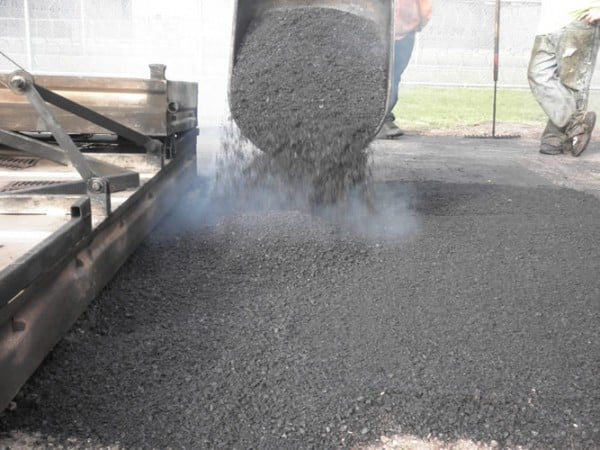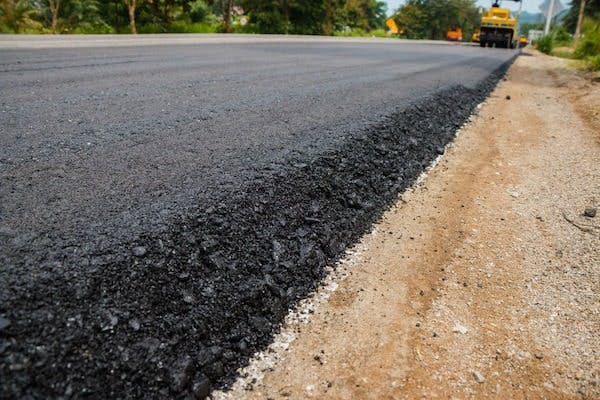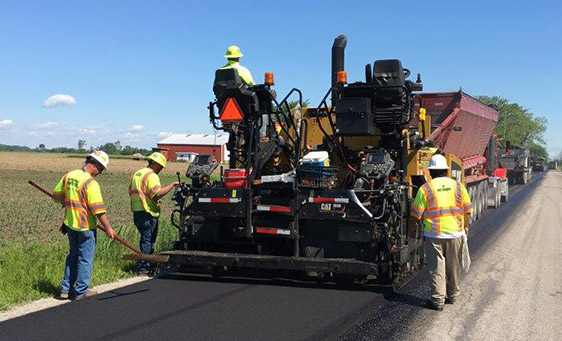Reimagine Your Area: Hot Mix Asphalt Paving for Angled Parking Lot Tasks
Reimagine Your Area: Hot Mix Asphalt Paving for Angled Parking Lot Tasks
Blog Article
Unlocking the Secrets of Hot Mix Asphalt Technology
Checking out the depths of hot mix asphalt technology discovers a world where meticulous procedures and specific solutions merge to form our roadways and facilities. The combination of aggregates, binders, and fillers isn't merely a construction job however a tactical orchestration of sturdiness and effectiveness. As we peer into the detailed dancing of elements, a tapestry of resilience and sustainability unravels. What lies below this surface of asphaltic proficiency, and what tricks wait to be unveiled in the world of paving technologies?
Relevance of Warm Mix Asphalt
Hot Mix Asphalt plays an important role in contemporary facilities growth due to its longevity and cost-effectiveness. As the most commonly used leading product for roadways, freeways, and car park lots, Hot Mix Asphalt provides a range of benefits that contribute to its importance in building and construction tasks.
The durability of Warm Mix Asphalt comes from its structure, which includes aggregates, binder, and filler materials that are carefully picked and blended to satisfy particular performance needs. This accurate combination results in a solid and adaptable sidewalk that can sustain regular use without substantial wear and tear. Warm Mix Asphalt is 100% recyclable, additional enhancing its sustainability and ecological advantages. In general, the importance of Warm Mix Asphalt in facilities development can not be downplayed, as it remains to be a keystone of contemporary building practices.
Elements of Asphalt Mixes
The structure of asphalt mixes is composed of carefully selected aggregates, binder, and filler materials that are vital for attaining specific performance demands. Accumulations are the key part of asphalt blends, providing strength and stability. The binder, normally asphalt or asphalt concrete, holds the aggregates together and provides flexibility and toughness to the mix.
The mix and percentage of these elements play a substantial duty in establishing the high quality and efficiency of the asphalt mix. Designers very carefully create the mix to satisfy details needs, taking into consideration variables like website traffic quantity, environment conditions, and sidewalk life expectancy. Appropriate choice and harmonizing of aggregates, binder, and fillers are vital for creating durable, lasting asphalt pavements.
Mixing and Manufacturing Strategies

Once the aggregates are selected, the binder, frequently asphalt cement, is included in bind the products with each other. The binder's top quality and amount significantly influence the mix's resistance, strength, and flexibility to ecological elements. Additionally, fillers like hydrated lime or Rose city concrete may be incorporated to boost details attributes of the asphalt mix, such as its workability or wetness resistance.
Throughout manufacturing, the accumulations and binder are heated up, generally between 250-325 ° F(121-163 ° C ), to promote blending and make sure proper covering of the accumulations. The blending process has to be complete to accomplish a homogeneous combination that promotes the wanted official site performance features of the asphalt. Various methods, such as set mixing or drum mixing, are utilized to attain high-grade and regular asphalt mixes for building and construction jobs.
Factors Influencing Asphalt Performance
Variables influencing asphalt efficiency include a series of variables that affect the durability, durability, and overall high quality of asphalt pavements. One crucial variable is the high quality of products utilized in the asphalt mix. The type and source of accumulations, the binder quality, and the ingredients all play a significant function in establishing the performance of the asphalt sidewalk. The rank of aggregates is crucial as it impacts the mix's workability, security, and resistance to rutting and breaking.

Ecological conditions additionally influence asphalt performance. Temperature level variations, wetness infiltration, and website traffic loads can all affect the architectural stability of the sidewalk. Layout factors to consider, such pop over here as pavement density and drain, are crucial in ensuring the lasting efficiency of the asphalt pavement. By carefully taking into consideration these professionals, aspects and engineers can maximize asphalt efficiency and enhance the service life of pavements.
Lasting Practices in Asphalt Modern Technology

Additionally, the advancement of warm-mix asphalt (WMA) innovations has gained grip in the last few years. WMA permits the manufacturing and positioning of asphalt mixes at reduced temperature levels compared to traditional hot-mix asphalt, causing minimized energy check my reference consumption and greenhouse gas exhausts. Moreover, using permeable asphalt blends can help minimize stormwater overflow issues by permitting water to infiltrate via the pavement and right into the ground, advertising natural water filtration and reenergize processes. By applying these sustainable techniques, the asphalt industry can add to building an extra eco-friendly and resilient infrastructure network.
Verdict
In final thought, warm mix asphalt modern technology plays an essential role in contemporary facilities advancement because of its longevity and cost-effectiveness. By carefully balancing components, employing proper blending strategies, and considering different variables, designers can create high-quality asphalt blends that withstand heavy traffic loads and harsh weather. Welcoming sustainable practices, such as using warm-mix modern technologies and recycled products, even more enhances the ecological kindness of asphalt innovation.
Mixing and manufacturing methods in hot mix asphalt innovation include the specific mix and handling of aggregates, binder, and fillers to produce a resilient and high-performance asphalt mix.Factors influencing asphalt efficiency include a range of variables that influence the longevity, longevity, and overall quality of asphalt pavements. Sustainable practices in asphalt technology incorporate various efforts intended at minimizing the environmental influence of asphalt production and paving procedures. By integrating recovered asphalt sidewalk (RAP) and recycled asphalt tiles (RAS) right into new asphalt mixes, the industry can significantly reduce the consumption of raw products and power, while additionally reducing garbage dump waste.
WMA permits for the production and positioning of asphalt mixes at lower temperature levels compared to standard hot-mix asphalt, resulting in reduced power intake and greenhouse gas discharges.
Report this page